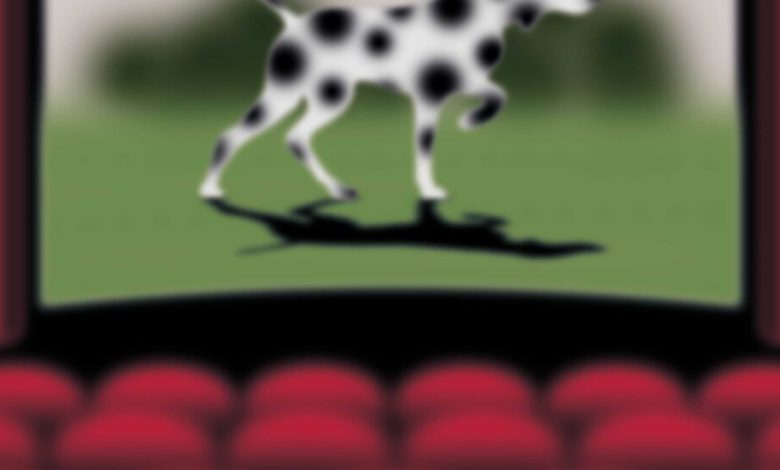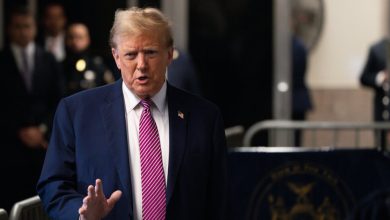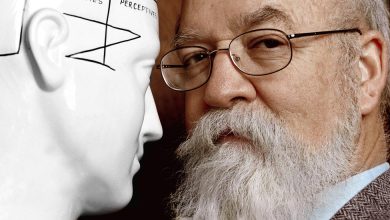A Smirk, a Smile, a Clenched Fist: What the Movies Taught Me to See

I was seduced by Cate Blanchett in “Tár.” The 1980s ecological disaster in “White Noise” felt eerily familiar to me in our time of climate change. I was struck by how dark Guillermo del Toro’s “Pinocchio” was compared with the Disney animated version I saw as a child in South Jersey in the early 1960s.
As I do every year, I’ll tune in to the Golden Globes tonight and the Oscars in March. I’ll be curious to find out if my picks will win best picture or other awards.
Many people enjoy movies. But people are often surprised that I do, too, because I am legally blind. I don’t watch a film the way a sighted person does, but the experience opens up a whole world for me.
Like many other people who are legally blind, as I have been my whole life, I do have some vision. I see colors, I see motion, and I see faces, though I may not recognize whose faces they are unless they are very near. I can write on my iPad and computer and read on my Kindle if I enlarge the font enough. I can watch movies or TV if I’m close to the screen.
I owe my movie-maven status to my mom and dad, now deceased. They loved me. They hadn’t met any blind or low-vision people before I was born, and maybe because of that, they never set rigid boundaries on what I should or shouldn’t do. “We wanted you to do and enjoy as much as possible what the other kids did,” my mother told me. And so the movies.
Yearly, my folks took me to see an ophthalmologist. He was a kind man who saw the whole me, not just a pair of bad eyes. “Her vision will always be impaired,” he said to my folks, “but Kathi’s still learning to use the vision she has.”
Watching movies, the good doctor advised, would encourage me to take in images. To look at people’s faces and gestures. To notice what landscapes, houses and other spaces and places look like.
My parents, film buffs, needed no encouragement to expose me to the silver screen. In my small town, every Saturday afternoon, kids lined up to go to the matinee at the local movie theater. Quarter in hand, I went with my pals to see the latest picture along with the trailers and cartoons that preceded it.
My grandmother would tell me to smile when she took my picture, but I had no idea what a smile looked like. I didn’t know what my dad was talking about when he’d tell me not to curl my lip. I was later thrilled to discover what smiling and dancing looked like when I saw Dick Van Dyke and Julie Andrews in “Mary Poppins.” I shivered as I looked into the deliciously evil eyes of Cruella de Vil in “101 Dalmatians.”
At the movies, for the first time, close to the giant silver screen, I could see clenched fists, grimaces, smiles, nods and other expressions and gestures. Back in the day, I would have had no idea of what a life hack was. But that’s what movies have been for me.
In real life, I frequently have trouble reading the room because I rarely see facial expressions, gestures or what people are wearing unless I’m very close to them. I frequently miss visual information that gives sighted people clues about the people they date, fall in love with, marry, parent, socialize with and work with. I can’t see how you gesture to get a server’s attention when you’re having dinner out or when you’re flirting with me or rolling your eyes.
I won’t pretend that I see what sighted people see when they view movies, but I see enough. I also sometimes use audio description, a form of narration that gives blind and low-vision people access to visual elements in movies and other media.
Yes, a lot of the time I can’t tell what weapon is used in a murder mystery or the size of the engagement ring a lover has hidden in his beloved’s dessert. But the sheer experience of film is what I love — the sense of images moving across the screen as we move through space and time. And because movies are on a big screen, with close-ups of lovers, musical numbers, battles and street scenes, I’m able to view what I otherwise rarely can.
My everyday life, like that of everyone I’ve ever known, isn’t like the movies. I’m not, like Norma Desmond, getting ready for my close-up. I’ve had some lovely romances but never as magical as in “The Philadelphia Story.” I have moments of existential dread. But I’m not Laurence Olivier in “Hamlet.”
Yet the imaginary world of the movies has helped me by giving me irreplaceable, even magical glimpses into how the world works. From watching films, I got my first idea of what people were talking about when they said someone was smirking, snarling or shrugging their shoulders. Today I’m not bewildered if I’m asked to smile for a photo. One day, I’ll learn how to roll my eyes.
Movies have been a decoder ring that helped me make sense of the world. They’ve taught me to go beyond — to picture beyond the rainbow and wild moonlight and even to take pride in how I see them in ways not everyone does. A blur, the need to get really close, to pay exquisite attention can be beautiful.
Kathi Wolfe is the author of the poetry collection “Love and Kumquats.”
The Times is committed to publishing a diversity of letters to the editor. We’d like to hear what you think about this or any of our articles. Here are some tips. And here’s our email: [email protected].
Follow The New York Times Opinion section on Facebook, Twitter (@NYTopinion) and Instagram.




